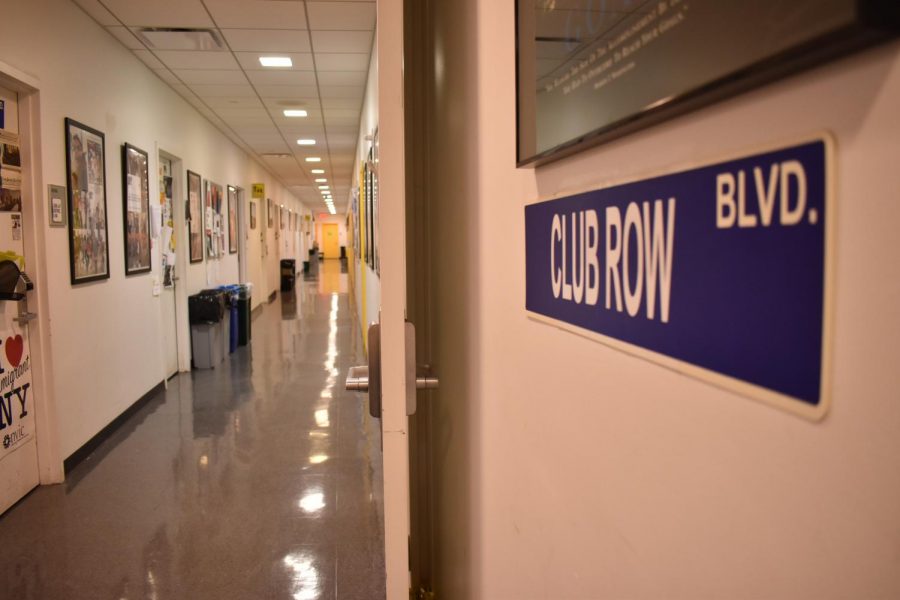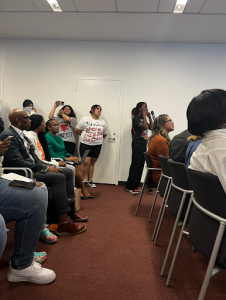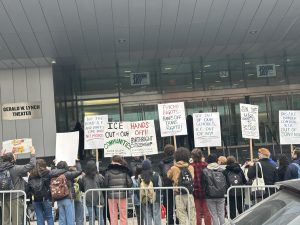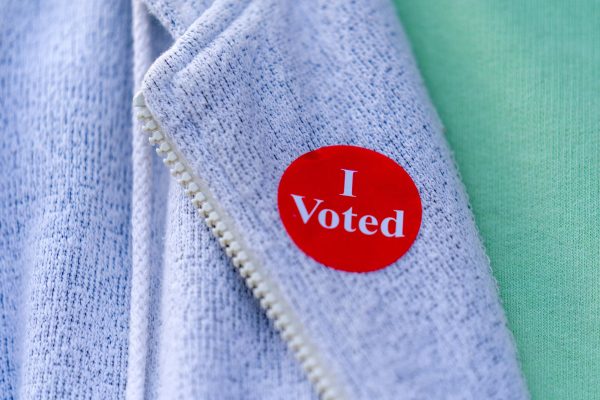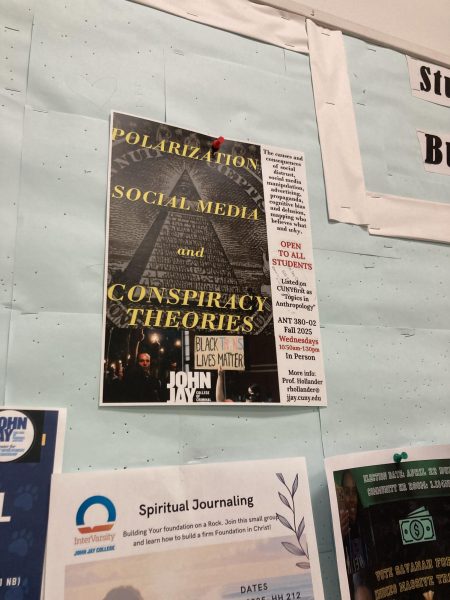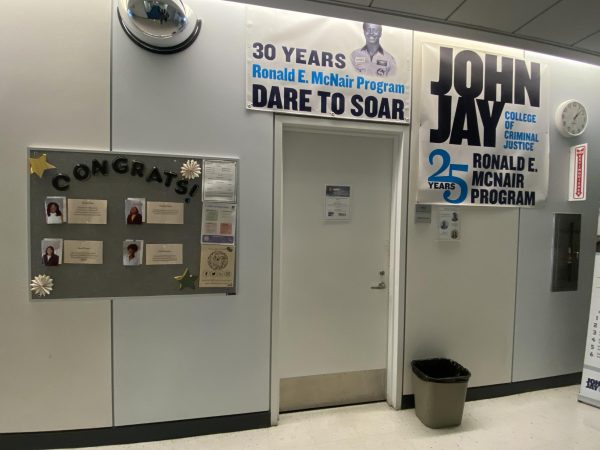Club Row Adjusts to Virtual Life
May 10, 2021
The once lively, bustling halls of club row are now empty. Club row refers to the corridor that holds rooms dedicated to all the clubs on John Jay’s L2 floor. Like classes and other activities, they have also transitioned to a distanced format.
John Jay is home to many clubs. There are those that are educational like the International Criminal Justice Club and cultural ones like the Albanian Student Leadership Association.
Each semester on campus these organizations held regular meetings and special events to attract new members and keep existing members engaged.
Some of these events ranged from trips like whale-watching in Rockaway with the Environmental Club to ‘Feast of the Middle East’ with the Arab Student Union. Both club members and non-members were welcomed to most events and they became a way for students to stay active on campus.
Clubs are meant to form a sense of community and togetherness for students; a way for students to find others like themselves who may share similar interests. The transition to a distanced format is particularly difficult for those that are a part of these little communities.
“We went from a very high density of events and building community to making sure we still had community,” says Gary Singh, the President of Desi Society, a cultural club at John Jay. “We went from making meetings in person and hiring people for events to scheduling zoom meetings.”
Club executives are now working to keep members engaged from afar. Events that would normally be held in person during community hour or after day classes are now being held on zoom.
With the struggles of life during COVID-19, executives are finding it difficult to schedule online events at times that would work for everyone, and are thus seeing less engagement.
Executives, who are student leaders, are more familiar with on-campus engagement. They spoke to other students, held meetings, and put up flyers for events while on campus to attract new members.
“We were trained to do things differently on campus so when we were hit with off-campus events we were confused on how to do anything because we didn’t have access to some of our club resources,” says Taspia Hossain, the President of John Jay’s Muslim Student Association.
On campus, many general meetings or small events would take place during community hour. Since almost all John Jay students are guaranteed not to have class during this time, it was easy for clubs to meet between class.
Many students are now working or are otherwise engaged during the day and have asynchronous classes. This means that community hour no longer works for a large majority. This time was also utilized as a way to reach out to free students and inform them about clubs.
Now this must be done online.
“I haven’t noticed many emails about clubs,” said Emily Szulwach, a senior at John Jay. “That’s literally the only way we can hear about them right now.”
Student organizations are having difficulties reaching students through email as well. Between emails from professors and notifications about assignments, club emails can get buried. This is where social media plays a part.
“I followed a few club accounts and I see their posts on Instagram,” said Afia Sheikh. “They put zoom meeting information on their stories.”
Clubs with Instagram accounts can share posts about online events and reach out to members through this platform. Members can also stay engaged by joining posted events or interacting with polls and question stickers on Instagram stories.
Content plays a big role for clubs. Quality content means more engagement. Simply holding a zoom meeting and saying hello will not bring students back.
This presents another challenge.
“We’ve been having issues with speakers to come and speak at our events,” said Asmaou Diallo, the treasurer of the Muslim Student Association. “So that’s why we haven’t been able to hold events like we normally did.”
Clubs who bring in speakers from outside the John Jay community, like the Muslim Student Association were very popular on campus. Holding these types of events gave John Jay students an opportunity to learn and grow connections.
“We have events for Ramadan,” says Diallo. “So we’re excited.” Ramadan is the Islamic holy month, a time of fasting dedicated to charity and prayer.
As CUNY prepares to transition to 25-50% capacity in the fall, this could mean better opportunities for clubs to once again build the sense of community John Jay has in person.


